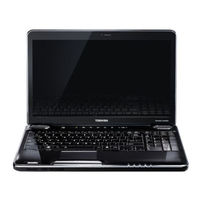Toshiba A505D-S6958 Laptop Keyboard Keys Manuals
Manuals and User Guides for Toshiba A505D-S6958 Laptop Keyboard Keys. We have 3 Toshiba A505D-S6958 Laptop Keyboard Keys manuals available for free PDF download: User Manual, Specifications
Advertisement
Toshiba A505D-S6958 Specifications (4 pages)
Toshiba Satellite A505D-S6958: Specifications
Advertisement
Advertisement


